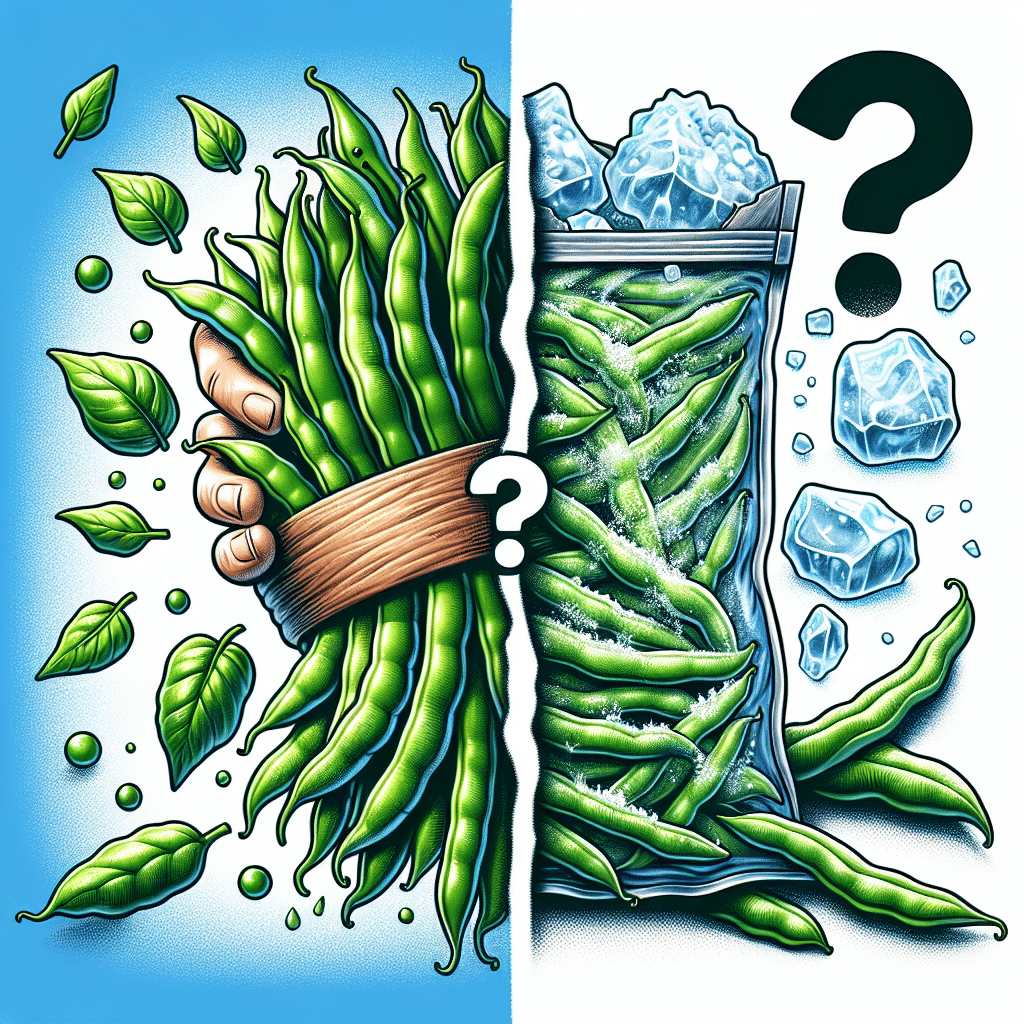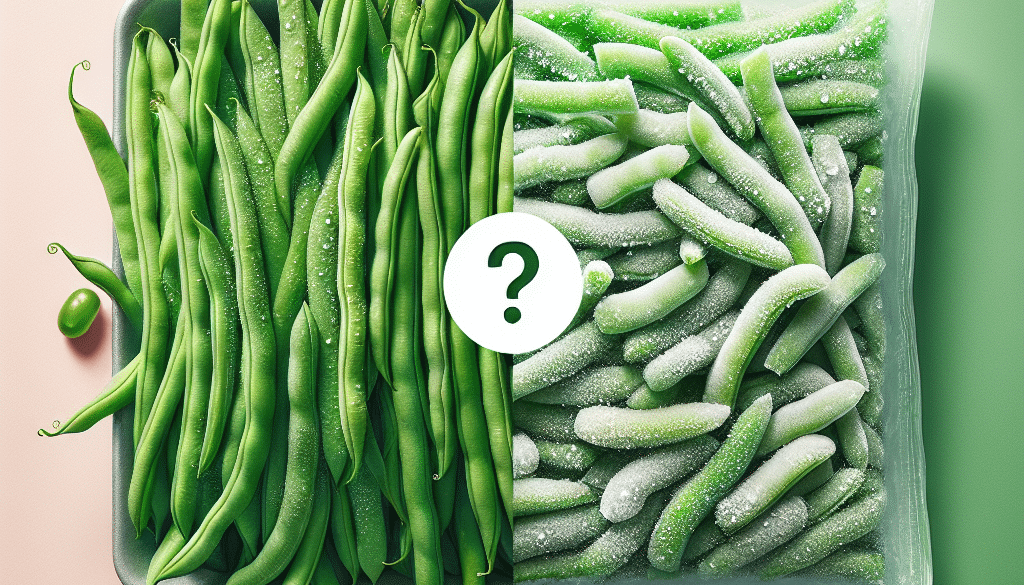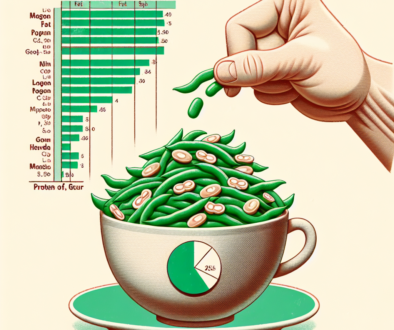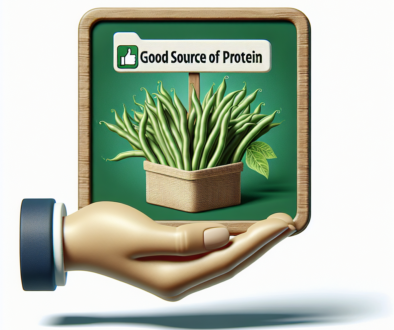Fresh vs. Frozen Green Beans: Which is Better?
-
Table of Contents
- Fresh vs. Frozen Green Beans: A Comprehensive Comparison
- Nutritional Showdown: Fresh vs. Frozen Green Beans
- Taste and Texture: A Sensory Evaluation
- Convenience and Shelf Life: Fresh vs. Frozen
- Cost Comparison: Is Fresh Always More Expensive?
- Environmental Impact: Fresh and Frozen Footprints
- Conclusion: Balancing Benefits for Optimal Choice
- Discover ETprotein’s High-Quality Protein Products
Fresh vs. Frozen Green Beans: A Comprehensive Comparison

Green beans, a staple in many diets around the world, are not only delicious but also packed with nutrients. They can be consumed in various forms, including fresh and frozen. This article delves into the debate between fresh and frozen green beans, examining which might be the better choice for consumers. We will explore the nutritional value, taste, convenience, cost, and environmental impact of both options, providing a well-rounded perspective on this common culinary dilemma.
Nutritional Showdown: Fresh vs. Frozen Green Beans
When it comes to nutrition, both fresh and frozen green beans offer a wealth of vitamins and minerals. However, the way they are processed and stored can affect their nutritional content.
- Vitamin Content: Fresh green beans are rich in vitamins A, C, K, and several B vitamins. They also contain minerals like calcium, iron, magnesium, and potassium. Frozen green beans are often blanched before freezing, which can lead to a slight loss of water-soluble nutrients, such as vitamin C and B vitamins.
- Antioxidant Levels: The freezing process can actually preserve the antioxidant content of green beans. Studies have shown that frozen green beans maintain their levels of antioxidants like flavonoids and carotenoids well.
- Fiber and Protein: Both fresh and frozen green beans are good sources of dietary fiber and protein, which are essential for maintaining a healthy digestive system and muscle repair.
It’s important to note that the nutritional differences between fresh and frozen green beans are relatively minor. The key factor is how long the fresh beans have been stored before consumption; the longer they sit, the more nutrients they may lose.
Taste and Texture: A Sensory Evaluation
The taste and texture of green beans can be a deciding factor for many people. Here’s how fresh and frozen green beans stack up:
- Taste: Fresh green beans typically have a more vibrant and natural flavor, especially if they are in season and locally sourced. Frozen green beans can sometimes have a blander taste, depending on the quality and how they were processed.
- Texture: Fresh green beans offer a crisp texture that is often preferred. However, if they are not cooked properly, they can become tough and stringy. Frozen green beans tend to be softer after cooking, which might be desirable for some dishes.
Ultimately, the taste and texture will also depend on personal preference and the intended use in recipes. Some dishes may benefit from the crispness of fresh green beans, while others might be better suited to the softer texture of frozen beans.
Convenience and Shelf Life: Fresh vs. Frozen
Convenience is a significant factor in the fresh vs. frozen debate. Here’s how each type measures up:
- Preparation Time: Fresh green beans require washing and trimming before they can be cooked, which can be time-consuming. Frozen green beans are often pre-trimmed and ready to cook, saving time in meal preparation.
- Shelf Life: Fresh green beans have a limited shelf life and can spoil within a week if not stored properly. Frozen green beans, on the other hand, can last for several months in the freezer without significant loss of quality.
- Availability: Fresh green beans are typically available year-round, but they are at their peak during the summer months. Frozen green beans are available all year and can be a good alternative when fresh beans are out of season or not as readily available.
For those with busy lifestyles or limited access to fresh produce, frozen green beans offer a convenient and long-lasting alternative without sacrificing too much in terms of nutritional value.
Cost Comparison: Is Fresh Always More Expensive?
The cost of green beans can vary depending on the form you choose. Here’s a breakdown of the financial considerations:
- Price Per Pound: Fresh green beans can be more expensive per pound than frozen, especially if they are organic or locally sourced. However, prices can fluctuate based on seasonality and availability.
- Waste Factor: With fresh green beans, there is often waste due to spoilage or the need to trim ends. Frozen green beans reduce waste as they are pre-trimmed and have a longer shelf life.
- Bulk Buying: Frozen green beans can be purchased in bulk, which may lead to cost savings over time. Fresh green beans are less likely to be bought in bulk due to their shorter shelf life.
While fresh green beans might seem more expensive upfront, considering the potential waste and the price of out-of-season produce, frozen green beans can be a cost-effective choice.
Environmental Impact: Fresh and Frozen Footprints
The environmental impact of fresh and frozen green beans is another aspect to consider. Factors such as transportation, storage, and packaging all play a role:
- Carbon Footprint: Fresh green beans that are transported long distances have a higher carbon footprint due to the energy required for refrigerated transport. Locally grown fresh beans have a much lower impact. Frozen green beans also require energy for freezing and storage, but they can be transported more efficiently and stored longer, which may reduce waste.
- Packaging: Frozen green beans are typically packaged in plastic, which has environmental implications. Fresh green beans may come without packaging or in recyclable materials if bought locally.
Choosing locally grown fresh green beans or frozen beans with sustainable packaging can help minimize environmental impact.
Conclusion: Balancing Benefits for Optimal Choice
In the debate between fresh and frozen green beans, there is no clear winner. Both options offer nutritional benefits, and the best choice may depend on factors such as taste preference, convenience, cost, and environmental considerations. Fresh green beans are ideal when in season and locally sourced, offering superior taste and texture. Frozen green beans provide convenience, a longer shelf life, and year-round availability, making them a practical choice for many households.
Ultimately, the decision between fresh and frozen green beans should be based on individual needs and values. By understanding the nuances of each option, consumers can make informed choices that align with their dietary preferences, lifestyle, and ethical considerations.
Discover ETprotein’s High-Quality Protein Products
After exploring the benefits of green beans, why not consider incorporating high-quality protein into your diet? ETprotein offers a range of organic bulk vegan protein and plant proteins that are perfect for enhancing your meals. Their products, including Organic rice protein, clear rice protein, pea protein, clear pea protein, pumpkin seed protein, sunflower seed protein, and mung bean protein, are non-GMO, allergen-free, and feature a neutral taste.
Whether you’re involved in the nutraceutical, pharmaceutical, cosmeceutical, veterinary, or food and beverage industries, ETprotein provides comprehensive solutions to meet all your protein needs. Trusted by leading global brands and Fortune 500 companies, ETprotein is your go-to source for premium protein products.
About ETprotein:
ETprotein, a reputable protein Chinese factory manufacturer and supplier, is renowned for producing, stocking, exporting, and delivering the highest quality organic bulk vegan protein and plant proteins. They include Organic rice protein, clear rice protein, pea protein, clear pea protein, pumpkin seed protein, sunflower seed protein, mung bean protein, etc. Their offerings, characterized by a neutral taste, non-GMO, allergen-free attributes, cater to a diverse range of industries. They serve nutraceutical, pharmaceutical, cosmeceutical, veterinary, as well as food and beverage finished product distributors, traders, and manufacturers across Europe, USA, Canada, Australia, Thailand, Japan, Korea, Brazil, and Chile, among others.
ETprotein specialization includes exporting and delivering tailor-made protein powder and finished nutritional supplements. Their extensive product range covers sectors like Food and Beverage, Sports Nutrition, Weight Management, Dietary Supplements, Health and Wellness Products, and Infant Formula, ensuring comprehensive solutions to meet all your protein needs.
As a trusted company by leading global food and beverage brands and Fortune 500 companies, ETprotein reinforces China’s reputation in the global arena. For more information or to sample their products, please contact them and email sales(at)ETprotein.com today.












